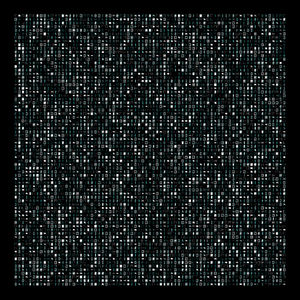
about
Kinetic Art and Quantum Theory
Toward an Aesthetics of Instability
Since its emergence in the mid-20th century, kinetic art has sought to overcome the age-old immobility of painting and sculpture by turning the artwork into an experience that is moving, unstable, and participatory. This upheaval coincided with a historical moment when science—particularly quantum physics—was reinventing our relationship with reality. In both cases, the very foundations of perception were being questioned: matter was no longer fixed, light was no longer continuous, and the observer was no longer a passive spectator but a determining actor.
Quantum theory teaches us that reality consists of probabilities, interactions, and observations. Similarly, kinetic art demonstrates that the artwork exists fully only in lived experience—in the vibration of light, the repetition of a motif, or the instability of a mechanical device. In this sense, kinetic art can be read as a visual and sensorial extension of the quantum revolution: both reject fixed certainties in favor of randomness, instability, and co-creation between phenomenon and observer.
Artists such as Julio Le Parc, Francisco Sobrino, Yvaral, and Ludwig Wilding were among the first to stage this unstable dimension of perception. Their works play on optical illusion, repetition, and luminous vibration. Like quantum particles oscillating between superposed states, the forms of Le Parc or Wilding are never fixed: they appear, disappear, and recombine according to the spectator’s movement. The work is a field of possibilities, not a unique form.
In the same vein, Martha Boto and Antonio Asis introduced luminous and chromatic devices that fragment perception. Their work resonates with the quantum principle that light is both wave and particle: it unfolds in rhythms and interferences that escape any binary logic.
Today, a new generation of artists continues this adventure by integrating digital technology, interactivity, and real-time data. Antoine Schmitt, with his generative programs, explores the dynamics of complex systems in which each pixel responds to an algorithmic logic akin to the equations of physics. His work echoes Heisenberg’s uncertainty principle: the artwork is never entirely predictable, always in becoming.
Anne-Sarah Le Meur and Anne Blanchet deploy light as a living space, where color and form arise from continuous interactions. They create immersive environments close to quantum cosmology, where light becomes matter and space becomes vibration. Groups such as Lab(au) or Visual System inscribe kinetic art into the era of digital data and information flows. Their monumental devices transform quantum instability into a collective experience: spectators are immersed in luminous and sonic fields where chance and order overlap, recalling the dual nature of quantum matter.
Yoann Ximenes, for his part, uses video and algorithms to question the role of the observer in the creation of reality. His installations are sensory experiments in which measurement, trace, and shadow contribute to the emergence of the work, like in a physics laboratory.
presented artworks
agenda
opening: 16.10.2025 (invitation only)
exhibition: 17.10. -26.10?2025
check the web-site for further information
list of artists
Alberto Biasi, Anne Blanchet, Anne Sarah Le Meurr, Antoine Schmitt, Antonio Asis, Eduardo Kac, Atelier Rivas & Wloch, David Apikian, Francisco Sobrino, Ines Silva, Ionnis Perisoatis, Ivan Black, Joël Chasseriau, Julio Le Parc, LAb[au], Ludwig Wilding, Martha Boto, Nonotak, Pascal Dombis, Santiago Torres, Sascha Nordmeyer, Satoru Sato, SVincent Lerroy, Visual System, Yoann Ximenes, Yucef Merhi, Yvaral







